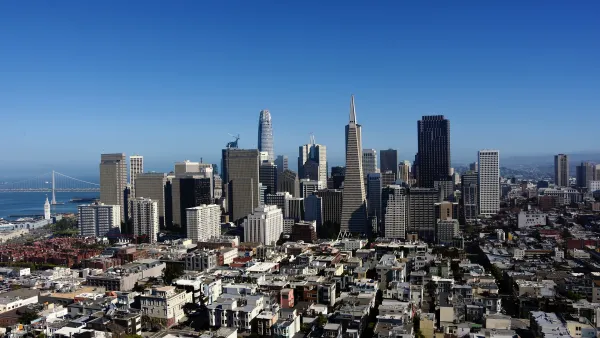My graduate school education left me with a lot of general ideas and a handful of specific ones. One that stuck with me is a concept from landscape architecture: the desire path. Technically, the term means a path where there isn't supposed to be one, a trail of wear and tear that wasn't planned.
My graduate school education left me with a lot of general ideas and a handful of specific ones. One that stuck with me is a concept from landscape architecture: the desire path. Technically, the term means a path where there isn't supposed to be one, a trail of wear and tear that wasn't planned.
College campuses are rife with desire paths, because landscapers begin with idealistic visions of sweeping lawns, and students adapt the landscape to meet their practical need to get to class on time. On my campus (San José State), groundskeepers perpetually battled with students, posting "Keep Off the Grass" signs in every corner and even cordoning off certain sections completely. They finally surrendered one part of campus, paving diagonal sidewalks right over the paths worn by harried students seeking a shortcut.
There is a growing group on Flickr that collects pictures of these paths. These pictures resonate with me, because of the plain human truth that they reveal. No matter how well we plan, no matter how many pedestrian studies we conduct or comprehensive plans we create, the human element is going to find its own way. This is something I try to remember in everything I do, and something we as a profession can continue to learn from. The people who disobey the beautiful logic of smart growth and urban design are trying to tell us something, and we need to watch and listen. We need to go back to the places we create and see how they work in real life. We need to plan for opening day, but make sure we're also there a month, a year, five years later to adapt and refine based on how people actually use the built environment. The desire paths are there for the finding, if your eyes are open.
As a final note, I've noticed that William H. Whyte's classic of urban observation "The Social Life of Small Urban Spaces" has finally turned up on YouTube. Every planner, urban designer and landscape architect should watch it at some point in their career. It's funny, whimsical, and turns up a lot of truth about human behavior.

National Parks Layoffs Will Cause Communities to Lose Billions
Thousands of essential park workers were laid off this week, just before the busy spring break season.

Retro-silient?: America’s First “Eco-burb,” The Woodlands Turns 50
A master-planned community north of Houston offers lessons on green infrastructure and resilient design, but falls short of its founder’s lofty affordability and walkability goals.

Delivering for America Plan Will Downgrade Mail Service in at Least 49.5 Percent of Zip Codes
Republican and Democrat lawmakers criticize the plan for its disproportionate negative impact on rural communities.

Test News Post 1
This is a summary

Test News Headline 46
Test for the image on the front page.

Balancing Bombs and Butterflies: How the National Guard Protects a Rare Species
The National Guard at Fort Indiantown Gap uses GIS technology and land management strategies to balance military training with conservation efforts, ensuring the survival of the rare eastern regal fritillary butterfly.
Urban Design for Planners 1: Software Tools
This six-course series explores essential urban design concepts using open source software and equips planners with the tools they need to participate fully in the urban design process.
Planning for Universal Design
Learn the tools for implementing Universal Design in planning regulations.
EMC Planning Group, Inc.
Planetizen
Planetizen
Mpact (formerly Rail~Volution)
Great Falls Development Authority, Inc.
HUDs Office of Policy Development and Research
NYU Wagner Graduate School of Public Service






























